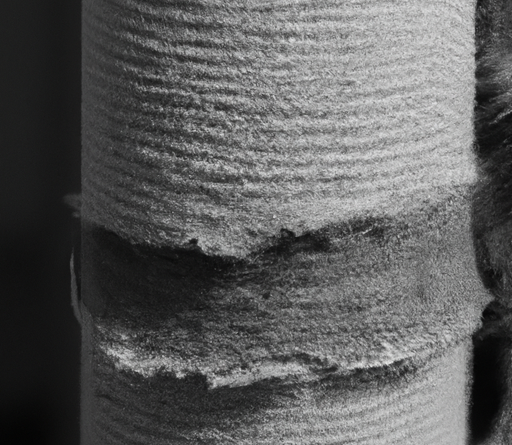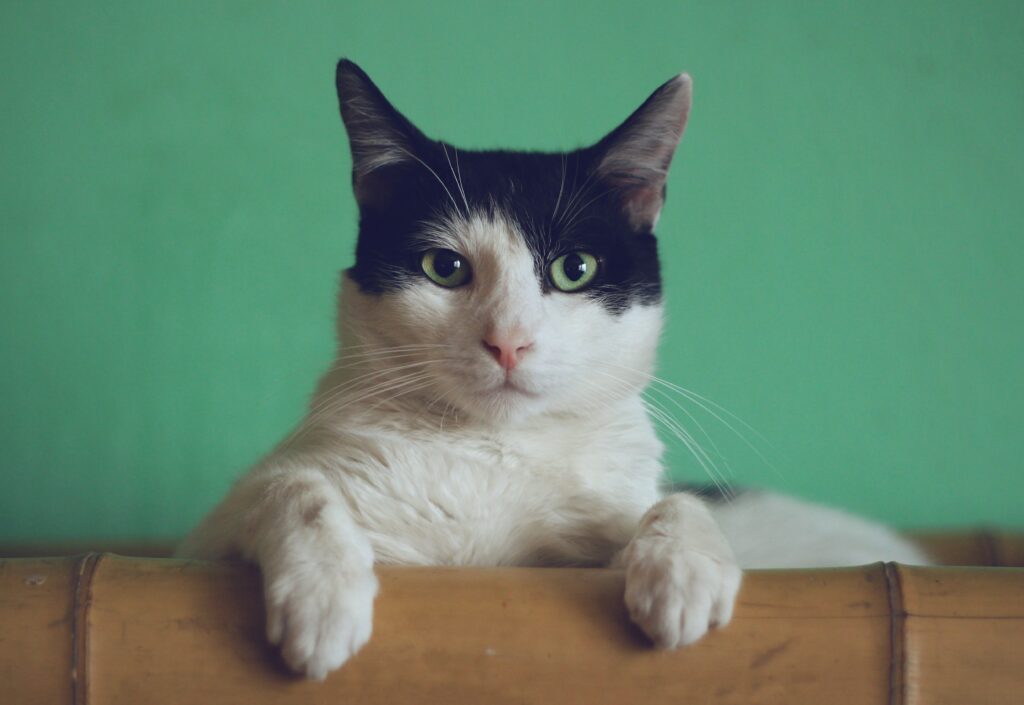
Do you find yourself wondering why your beloved feline friend insists on scratching up your furniture? It can be frustrating to come home to find your once pristine couch in shambles. But fear not, for there are ways to stop this behavior! In this article, we will explore the reasons behind your cat’s scratching habits and provide you with helpful tips on how to redirect their attention and save your furniture from further destruction. So, if you’re ready to bid farewell to scratched upholstery, read on to discover the secrets of keeping your cat content and your furniture intact.

Table of Contents
Understanding Why Cats Scratch Furniture
The instinctual behavior of scratching
Scratching is a natural instinct for cats. It is an integral part of their biological makeup and serves several purposes. Firstly, it helps cats maintain the health of their claws by removing the dead outer layer and keeping them sharp. Secondly, scratching allows cats to stretch and exercise their muscles, helping to keep them strong and limber. Finally, scratching provides a way for cats to relieve stress and release pent-up energy. Understanding these instinctual reasons behind scratching is crucial in addressing the issue effectively.
Marking territory
Cats have scent glands in their paws, and when they scratch on furniture, they are leaving behind their unique scent as a way of marking their territory. This scent is not detectable to humans, but it acts as a signal to other cats in the area that the furniture is claimed. By scratching, cats are asserting their presence and establishing boundaries within their environment. This territorial behavior is deeply ingrained in their nature and should be taken into consideration when attempting to modify their scratching habits.
Maintaining physical and emotional well-being
Scratching is not just a physical necessity for cats; it also plays a vital role in their emotional well-being. The act of scratching provides cats with a sense of comfort and security. It allows them to engage in a natural behavior that brings them pleasure and helps alleviate any anxiety or frustration they may be feeling. By understanding the emotional significance behind scratching, we can better address the issue by providing suitable alternatives and creating a cat-friendly environment that promotes their overall well-being.
Identifying the Reasons Behind Your Cat’s Furniture Scratching
Analyzing the furniture chosen for scratching
Pay attention to the specific pieces of furniture that your cat chooses to scratch. Cats often have their preferences when it comes to the texture and material of the surfaces they scratch. Some cats may prefer soft fabrics, while others may be drawn to harder surfaces like wood or leather. By identifying the types of furniture that attract your cat’s scratching behavior, you can offer alternative options that mimic those textures and redirect their focus away from your cherished couch or chair.
Observing the timing and frequency of scratching
Take note of when and how often your cat engages in scratching. Cats are creatures of habit, and their scratching behavior may be influenced by certain triggers or routines. Is your cat more inclined to scratch after waking up from a nap? Does scratching tend to coincide with meal times or play sessions? Understanding the timing and frequency of scratching can help you determine if there are any specific factors that contribute to this behavior, allowing you to address them appropriately.
Considering any underlying health issues
In some cases, excessive furniture scratching may be a sign of underlying health issues. Cats with allergies, skin irritations, or parasites may scratch more frequently as a way to alleviate discomfort. Additionally, arthritis or joint pain can make it more difficult for cats to retract their claws adequately, leading to increased scratching. If you notice any changes in your cat’s scratching behavior or suspect that there may be an underlying health issue, it is essential to consult with a veterinarian for a proper diagnosis and appropriate treatment.

Addressing the Issue: How to Stop Your Cat From Scratching Furniture
Providing suitable scratching alternatives
One of the most effective ways to redirect your cat’s scratching behavior is by providing suitable scratching alternatives. Investing in a high-quality scratching post or cat tree can offer a designated space for your cat to scratch to their heart’s content. Look for posts or trees that are tall enough for your cat to fully extend their body and have a sturdy base to prevent toppling. It is also crucial to choose posts covered in materials that mimic the textures your cat prefers, whether it be sisal rope, carpet, or corrugated cardboard.
Using deterrents to protect furniture
If your cat continues to show a strong interest in specific pieces of furniture, using deterrents can help protect those items. There are various types of deterrents available, such as double-sided tape, aluminum foil, or plastic mats with unpleasant textures. These deterrents can be applied to the surfaces your cat typically scratches, creating an undesirable experience when they attempt to scratch. Over time, your cat will learn to associate those furniture pieces with discomfort and seek out the designated scratching alternatives instead.
Trimming or covering your cat’s claws
Regularly trimming your cat’s claws can help minimize the damage caused by scratching. By keeping their claws short, you reduce the risk of them getting caught in fabrics or accidentally hurting themselves during playtime. If you are uncomfortable with trimming your cat’s claws, consider using soft plastic nail caps specifically designed for cats. These caps can be applied to the claws with adhesive and provide a protective barrier between your cat’s claws and your furniture.
Redirecting your cat’s behavior
Incorporating positive reinforcement techniques can be an effective way to redirect your cat’s scratching behavior. Whenever you observe your cat scratching an appropriate surface, praise and reward them with treats or playtime. This positive association will gradually encourage your cat to seek out the designated scratching alternatives. Additionally, if you catch your cat in the act of scratching furniture, gently redirect their attention to the scratching post or tree and reward them when they engage with it.
Ensuring a stimulating environment
A lack of stimulation can contribute to excessive scratching behavior in cats. Ensure that your cat has an enriching environment that provides ample opportunities for play and mental stimulation. Interactive toys, puzzle feeders, and regular play sessions can help keep your cat engaged and fulfilled. A tired and mentally stimulated cat is less likely to resort to destructive scratching as a means of releasing pent-up energy or seeking entertainment.
Seeking professional help if necessary
If you have tried various methods and are still struggling to address your cat’s furniture scratching, it may be beneficial to consult with a professional, such as a veterinarian or a certified animal behaviorist. These experts can evaluate your cat’s behavior comprehensively, identify underlying issues, and provide tailored guidance and solutions to help modify your cat’s scratching habits effectively.

Creating a Cat-Friendly Environment to Prevent Furniture Scratching
Choosing cat-friendly furniture materials
When selecting furniture for your home, consider materials that are more resistant to scratching. Opt for sturdy fabrics like microfiber or leather, as they are less likely to snag and show signs of damage. Avoid delicate fabrics such as silk or velvet, which can be more attractive to cats’ claws. Additionally, choose furniture with removable, washable covers to make maintenance easier and allow for cleaning any potential scent markings left by your cat.
Using scratching posts and cat trees
Incorporating scratching posts and cat trees throughout your home is essential in creating a cat-friendly environment. Place them in areas that your cat frequents to encourage their use. It is particularly helpful to have scratching posts near furniture pieces that your cat tends to target. This way, they have an alternative option readily available when the scratching urge kicks in. Make sure the scratching posts and cat trees are stable and securely anchored to prevent any accidents.
Placing scratchers strategically
Apart from dedicated scratching posts and cat trees, consider strategically placing smaller scratchers in areas where your cat spends a significant amount of time. These can include cardboard scratchers, horizontal scratching pads, or even strategically placed strips of carpet or sisal. By providing multiple scratching options, you increase the chances of your cat choosing a suitable alternative over your furniture.
Creating play and exercise opportunities
Engaging your cat in regular play and exercise sessions is crucial for their overall well-being and can help reduce the likelihood of excessive scratching. Interactive toys, feather wands, and puzzle toys are excellent options to keep your cat mentally and physically stimulated. Aim for at least two play sessions per day, each lasting around 10-15 minutes. This not only helps expend your cat’s energy but also provides an appropriate outlet for their natural hunting instincts.
Establishing a consistent routine
Cats thrive on routine, and establishing a consistent daily schedule can help prevent undesirable behavior like furniture scratching. Ensure your cat has regular mealtimes, playtimes, and designated rest areas. Having a predictable routine allows your cat to feel secure and confident in their surroundings, reducing stress-related behaviors like excessive scratching. Stick to the routine as closely as possible, and your cat will appreciate the structure and stability it provides.
By understanding the reasons behind your cat’s furniture scratching behavior, identifying the triggers, and addressing them through suitable alternatives and environmental modifications, you can successfully redirect their scratching habits and establish a harmonious coexistence between your cat and your furniture. Remember, patience and consistency are key, and with time and effort, you can create a cat-friendly environment where both you and your feline friend can feel comfortable and content.
